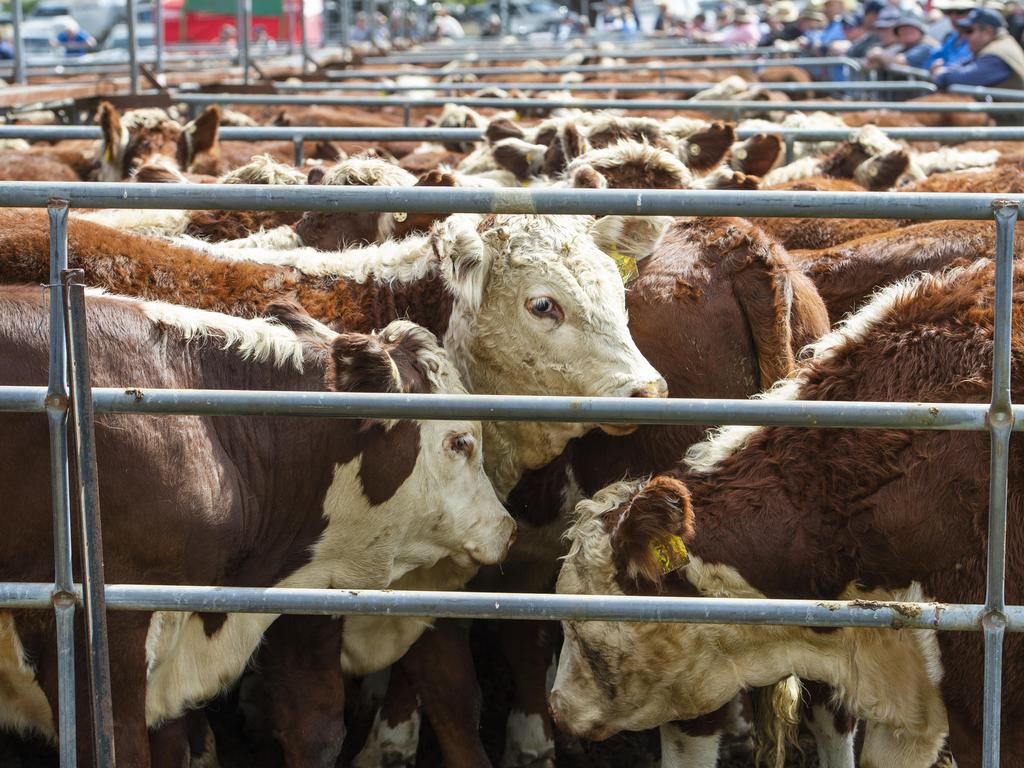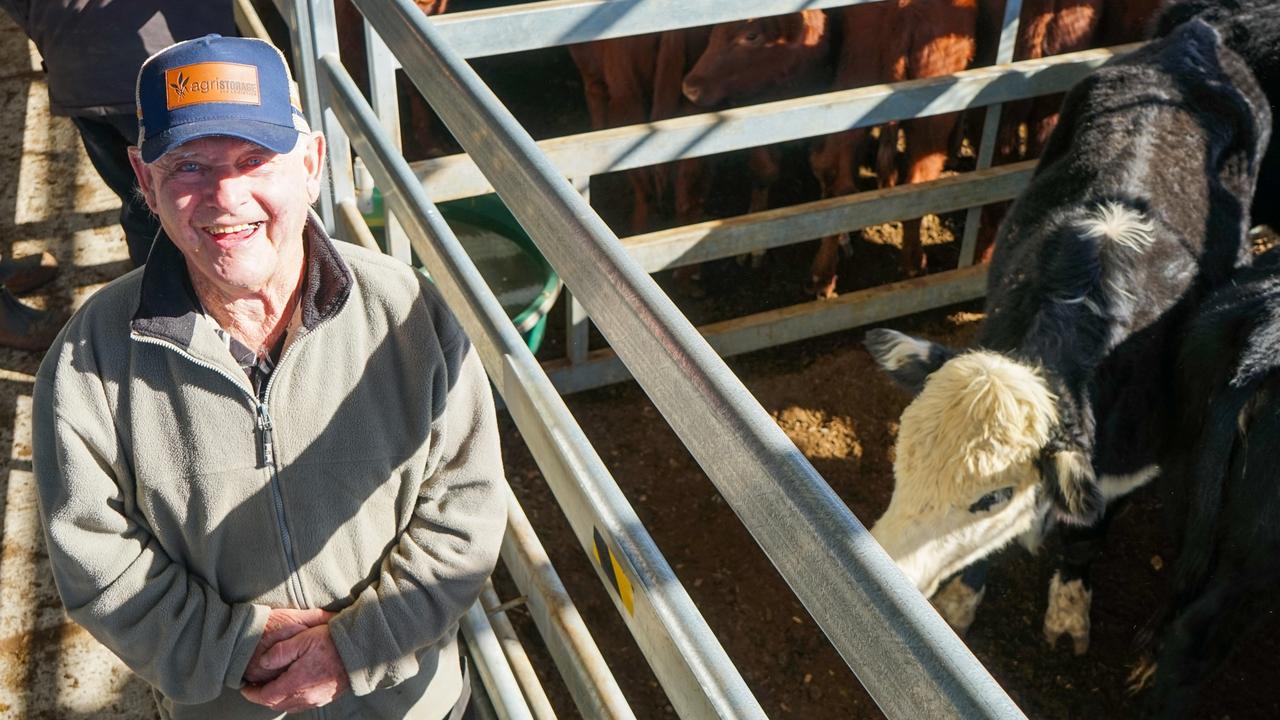Weaner calf sales: Strong prices expected as buyers and sellers flock to southeast
The famed southern weaner sales are prepared to kick off after a record 2021, with huge numbers of calves and cash set to change hands. Your coverage starts here.
Tens of millions of dollars are set to change hands as southern Australia’s famed weaner calf sales kick off tomorrow amid record confidence in the beef industry.
While last year’s prices were described as “history-making”, those stellar memories are expected to be eclipsed in coming days.
Experts say confidence in the beef industry, a stunning season across much of eastern Australia and predictions for more rain at the end of this week point to another astonishing weaner selling run.
More than 75,000 cattle are anticipated to be offered at about 40 sales over the next two months during the annual sell-off.

Auctions kick off at Wodonga and Wangaratta tomorrow, with yardings of 16,000 head and 3000 head respectively, with action to get underway in the Western District from Monday.
Around 20,000 calves will go under the auctioneer’s hammer at Hamilton and Casterton next week. Across the South Australian border, Naracoorte will also host a major two-day sale this Thursday and Friday.
Experts say underpinning the confidence of vendors and buyers is the state of the prime cattle market, with the benchmark Eastern Young Cattle Indicator closing at 1169c/kg carcass at the end of December.
In early January last year the EYCI traded at around 830c/kg carcass.
Last year’s opening weaner sales saw calves average more than 500c/kg liveweight with prices up $400-$600 a head thanks to drought-breaking rain.
This year’s rates are expected tosoar even higher due to strong global red meat demand and tight supplies, with buyers who have recently sold prime cattle ready to reinvest in replacement stock.
Queensland agent Jeff Gardland, of Grant Daniel and Long at Toowoomba, said he had a pocketful of orders from across southern QLD and northern NSW and would wait to see how the market played out.

“We paid an average of $1700 for our steers last year, and those who bought made an enormous profit from them,” Mr Garland said.
“Last year, I came with $1400 for cattle and after the first day, realised we needed much more.
“You would expect that most steers will be making $2200-$2300 (in coming weeks) – we will see what happens with the blacks (Angus) and then might have to swap over into the coloured (Hereford and Euro-cross) cattle.”
Dennis Heywood from Everton will sell 800 weaners at tomorrow’s sale at Wangaratta and while coy about his expectations, said “we will be satisfied with what they make”.
Mr Heywood expects good demand for his 500 Angus steer weaners, with the lead of the drafts weighing up to 400kg, but also expects his 300 heifers to sell well.
“I’ve never seen anything like this – people are making money when they finish their weaners so have that to spend,” he said.
Agents also report strong offerings as vendors take advantage of saleyard competition during the heady weaner sales.
Mortlake will offer around 7300mixed-sex weaners in a single sale in mid-January.
Elders Mortlake livestock manager Bruce Redpath said the volume was “beyond our expectations”.

The top weaner calves would weigh close to 400kg but there would be “very few calves under 300kg”.
“I think the demand is fantastic,” he said.
“In the north there is feed everywhere and that’s where we want the demand.”
Price expectations have already been set, with the best weaners in the Mortlake December store sale making $2800 (840c/kg, 333kg).
At Yea, Rodwells agent Tyson Bush said he expected lighter weaner calves to make 700-1000c/kg at their sale next week.
“It’s funny I remember a few years ago when steer calves would have made 500c/kg and I’d be rapt and then the next year was 550c/kg and the next was 600c/kg,” Mr Bush said.
“Now we’re looking at $7/kg to $10/kg for lighter calves – that’s just incredible. And consistently it’s reaching from $6.50 to $8/kg for those types.”
Mr Bush expects most of weaners in their January sale will weigh from 340kg to 420kg.
“I have been talking to truck drivers who take loads (of cattle) up north and they said to me they’ve never seen the feed that’s up there now,” Mr Bush said.
“It’s basically one end of the country to the other that want cattle.”




